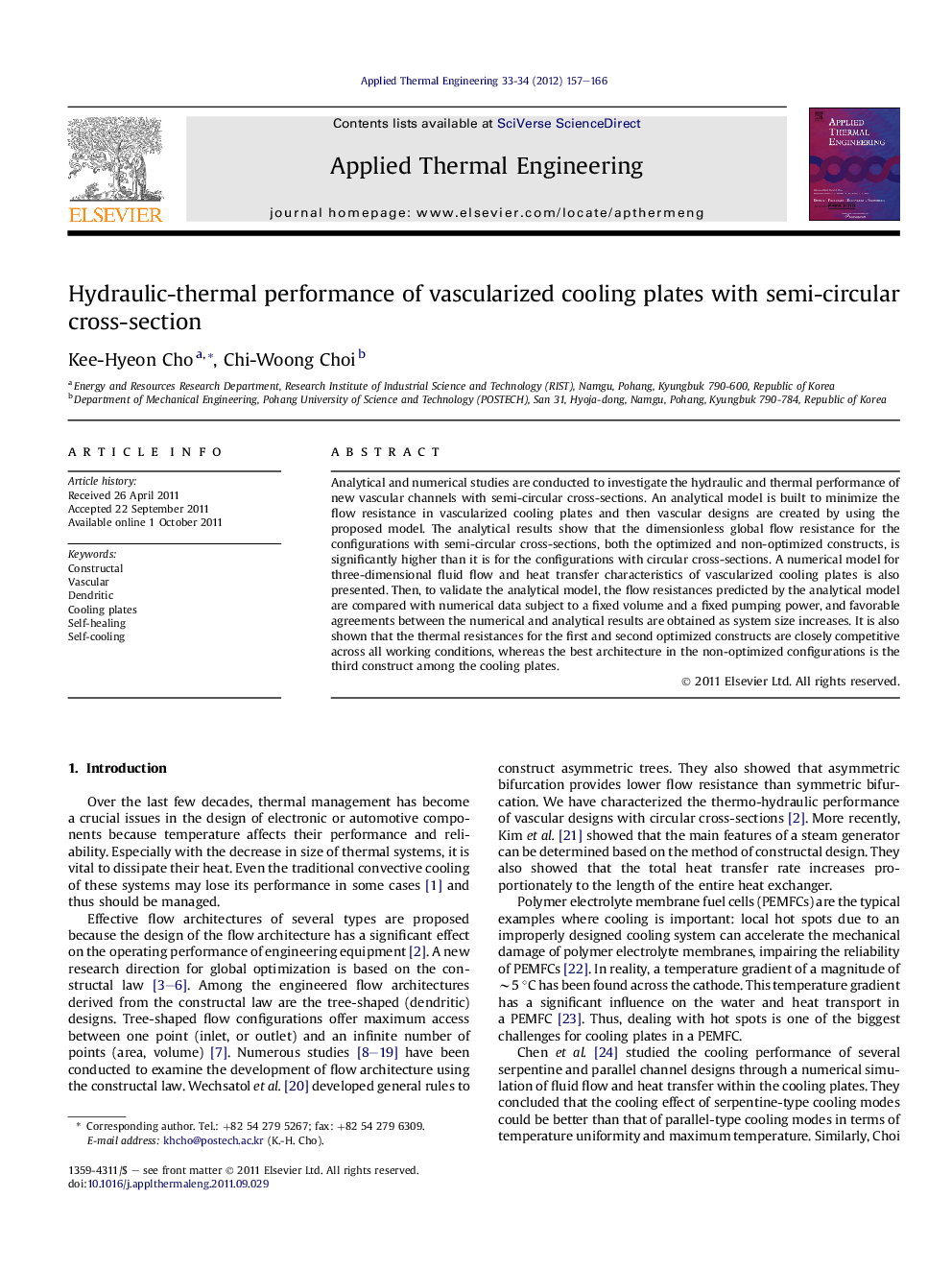| Article ID | Journal | Published Year | Pages | File Type |
|---|---|---|---|---|
| 647550 | Applied Thermal Engineering | 2012 | 10 Pages |
Analytical and numerical studies are conducted to investigate the hydraulic and thermal performance of new vascular channels with semi-circular cross-sections. An analytical model is built to minimize the flow resistance in vascularized cooling plates and then vascular designs are created by using the proposed model. The analytical results show that the dimensionless global flow resistance for the configurations with semi-circular cross-sections, both the optimized and non-optimized constructs, is significantly higher than it is for the configurations with circular cross-sections. A numerical model for three-dimensional fluid flow and heat transfer characteristics of vascularized cooling plates is also presented. Then, to validate the analytical model, the flow resistances predicted by the analytical model are compared with numerical data subject to a fixed volume and a fixed pumping power, and favorable agreements between the numerical and analytical results are obtained as system size increases. It is also shown that the thermal resistances for the first and second optimized constructs are closely competitive across all working conditions, whereas the best architecture in the non-optimized configurations is the third construct among the cooling plates.
